Bulbs
Flower Basics
Flower Beds & Specialty Gardens
Flower Garden
Garden Furniture
Garden Gnomes
Garden Seeds
Garden Sheds
Garden Statues
Garden Tools & Supplies
Gardening Basics
Green & Organic
Groundcovers & Vines
Growing Annuals
Growing Basil
Growing Beans
Growing Berries
Growing Blueberries
Growing Cactus
Growing Corn
Growing Cotton
Growing Edibles
Growing Flowers
Growing Garlic
Growing Grapes
Growing Grass
Growing Herbs
Growing Jasmine
Growing Mint
Growing Mushrooms
Orchids
Growing Peanuts
Growing Perennials
Growing Plants
Growing Rosemary
Growing Roses
Growing Strawberries
Growing Sunflowers
Growing Thyme
Growing Tomatoes
Growing Tulips
Growing Vegetables
Herb Basics
Herb Garden
Indoor Growing
Landscaping Basics
Landscaping Patios
Landscaping Plants
Landscaping Shrubs
Landscaping Trees
Landscaping Walks & Pathways
Lawn Basics
Lawn Maintenance
Lawn Mowers
Lawn Ornaments
Lawn Planting
Lawn Tools
Outdoor Growing
Overall Landscape Planning
Pests, Weeds & Problems
Plant Basics
Rock Garden
Rose Garden
Shrubs
Soil
Specialty Gardens
Trees
Vegetable Garden
Yard Maintenance
How to Plant Daffodil Bulbs in the Spring
How to Plant Daffodil Bulbs in the Spring. Spring or summer plantings of daffodils run the risk of rot, rodents and other ills, but with good drainage and careful attention, it can be done. Planting spring bulbs, such as daffodils, is best done in the fall, before the first frosts hit and while the ground is still easy to till. If you plant in the...
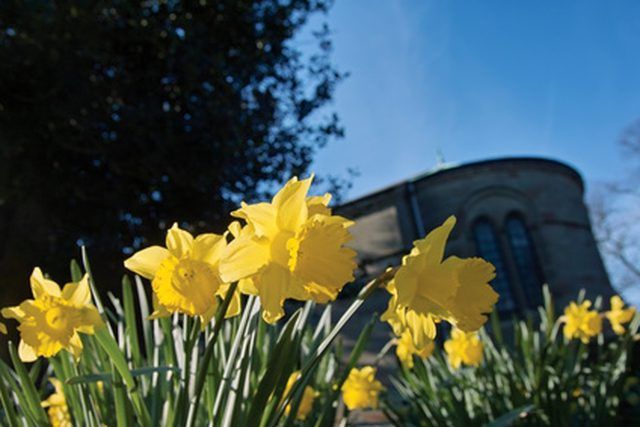
Spring or summer plantings of daffodils run the risk of rot, rodents and other ills, but with good drainage and careful attention, it can be done. Planting spring bulbs, such as daffodils, is best done in the fall, before the first frosts hit and while the ground is still easy to till. If you plant in the spring, fertilize well--and expect to wait a year or more, before they will next flower for you.
Things You'll Need
Bulbs of your choice (daffodils are "Narcissus")
Bulb planter tool, or hand-held garden spade
Soil
Mulch, pine needles or leaves
Choose a sunny location and, ideally, one where you will enjoy these harbingers of spring from your kitchen window. Daffodils, jonquils and paperwhites are early-spring bloomers, known by the botanical name "Narcissus." These bulbs require good drainage and periodic feedings of a general fertilizer. Some gardeners add bone meal, as well. It is best to plant bulbs that are not already in bloom.
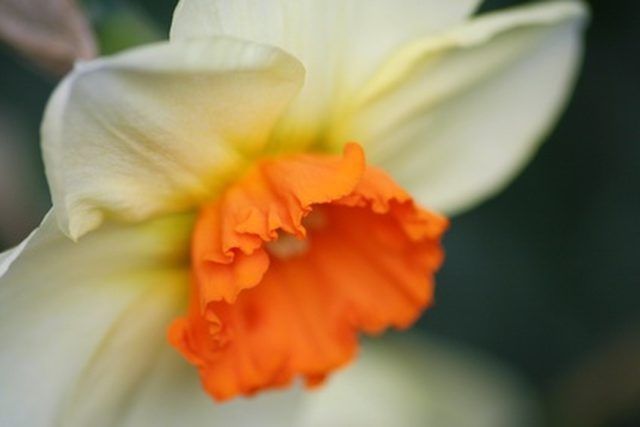
Plant the bulbs with the dried roots at the bottom (flatter side down) and the more pointed side up. Consider the landscaper's trick of planting in groupings of threes and fives, for a more professional appearance. Daffodils look great in clumps, and they will increase and divide, over the years.
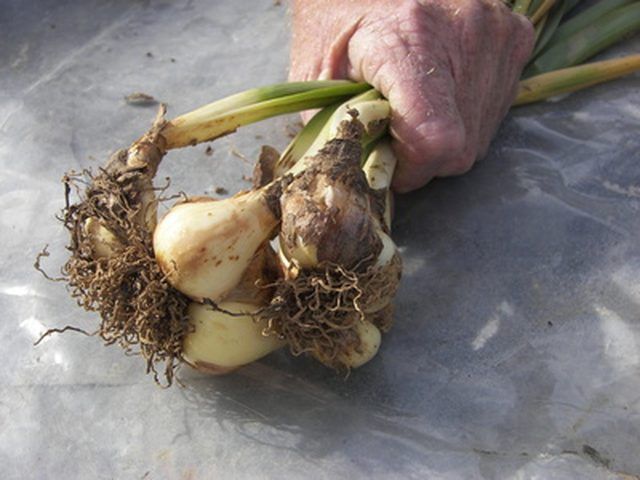
Use a bulb planting tool (like a wide cylinder or tube of metal, with a handle) or use your hand-held garden spade to make holes of about four inches to six inches in depth. The bulb should be planted at least as deep as the bulb is high--so if you have a two-inch bulb, plant it at least four inches deep. Shallower plantings will increase (and need to be divided) sooner.
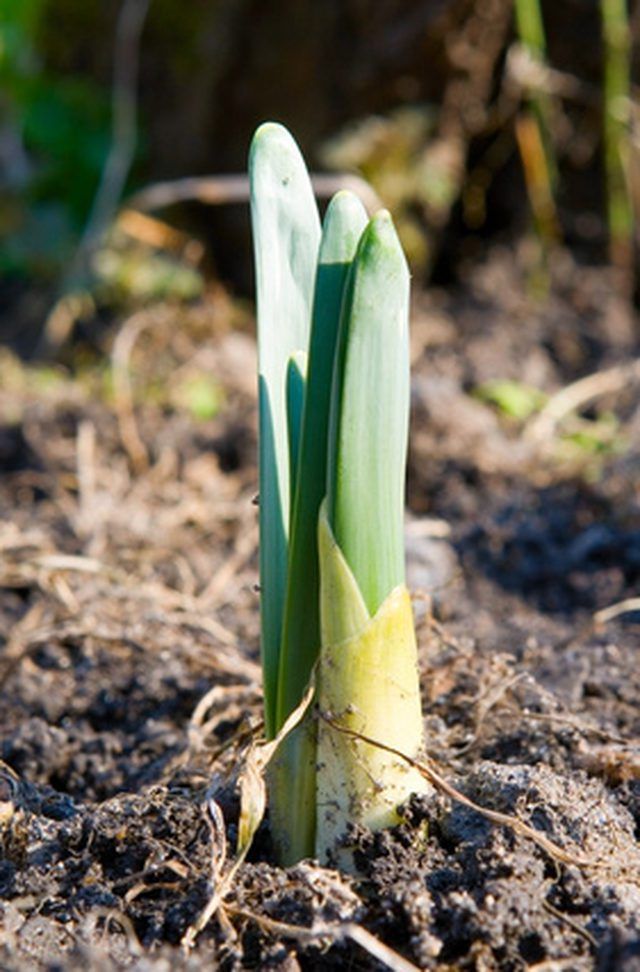
Protect the bulbs before winter hits, by mulching well with dried leaves, a commercial mulch or pine needles. In the spring, after danger of frost is past, gently remove the mulch around the emerging plants.
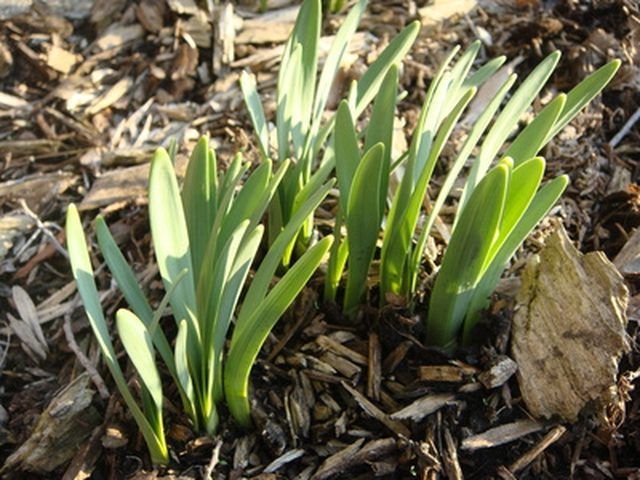
Check the plants periodically, especially if you have planted in the springtime. Continue to fertilize and water, over the summer months.
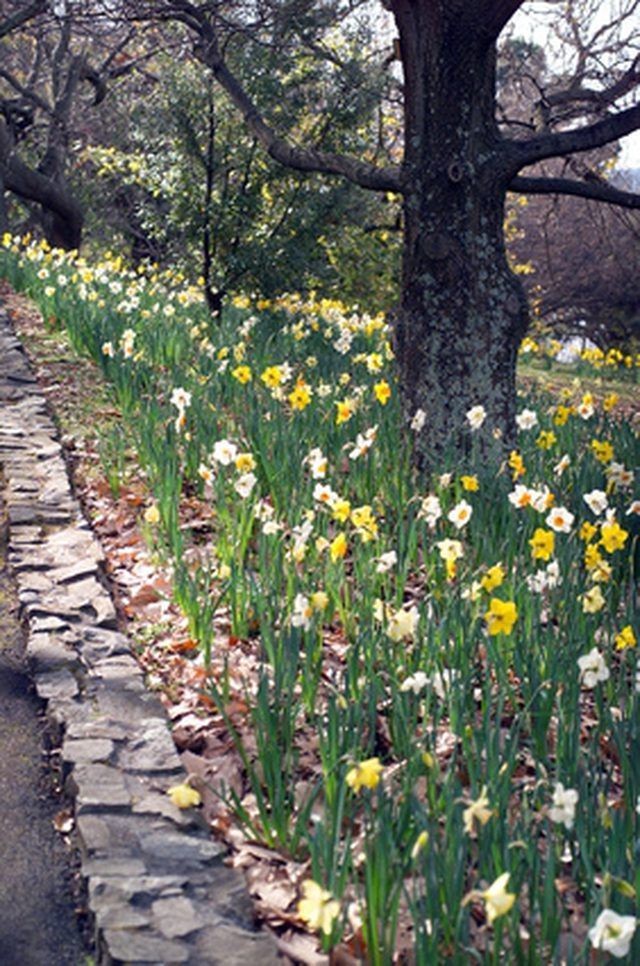
Mulch well, before winter, and cross your fingers for next year. You may skip a summer, before the next blooms appear, but continue to water and fertilize, to help the bulbs store food for the next blooms.
Tips & Warnings
Clump narcissus by variety--jonquils here, daffodils there, paperwhites somewhere else.
Spring bulbs can be brought inside and forced, for indoor blooms, by potting them up with soil and pebbles. Water well and place in a sunny window.
Bone meal additions to bulbs in the outdoor garden may attract rodents. Some gardeners dig it into the soil, then cover with chicken wire or other screening that the plants can grow through, to discourage squirrels.